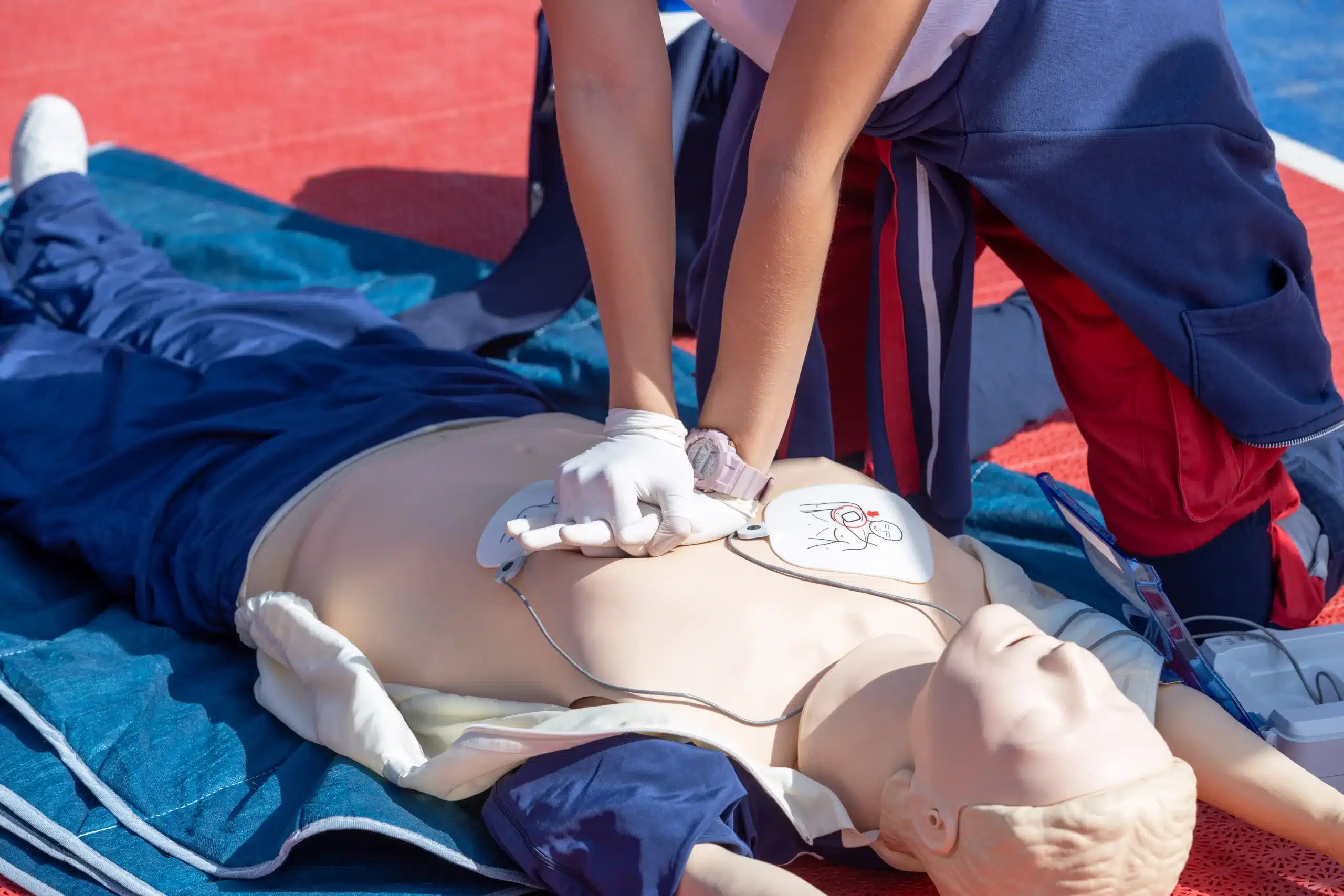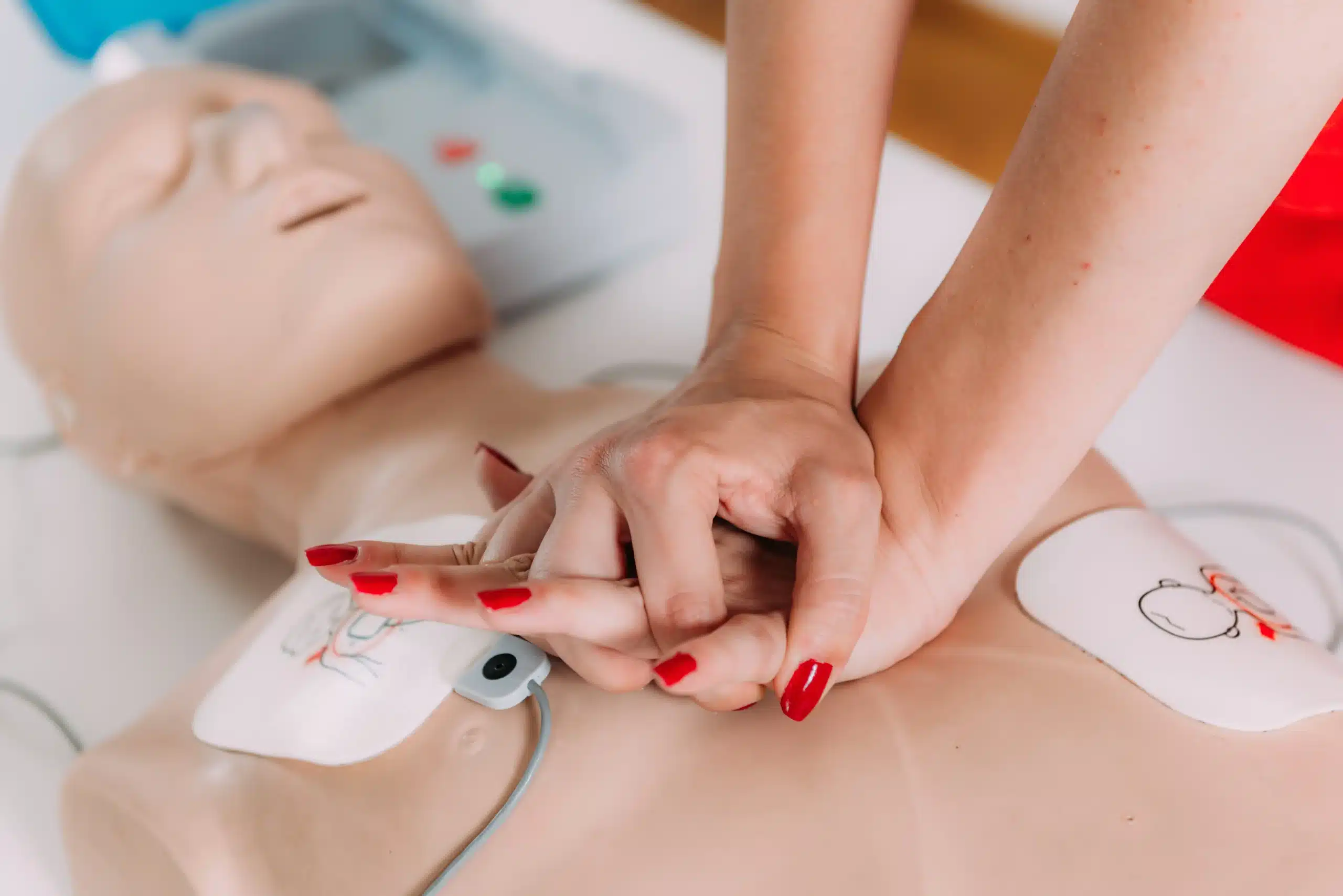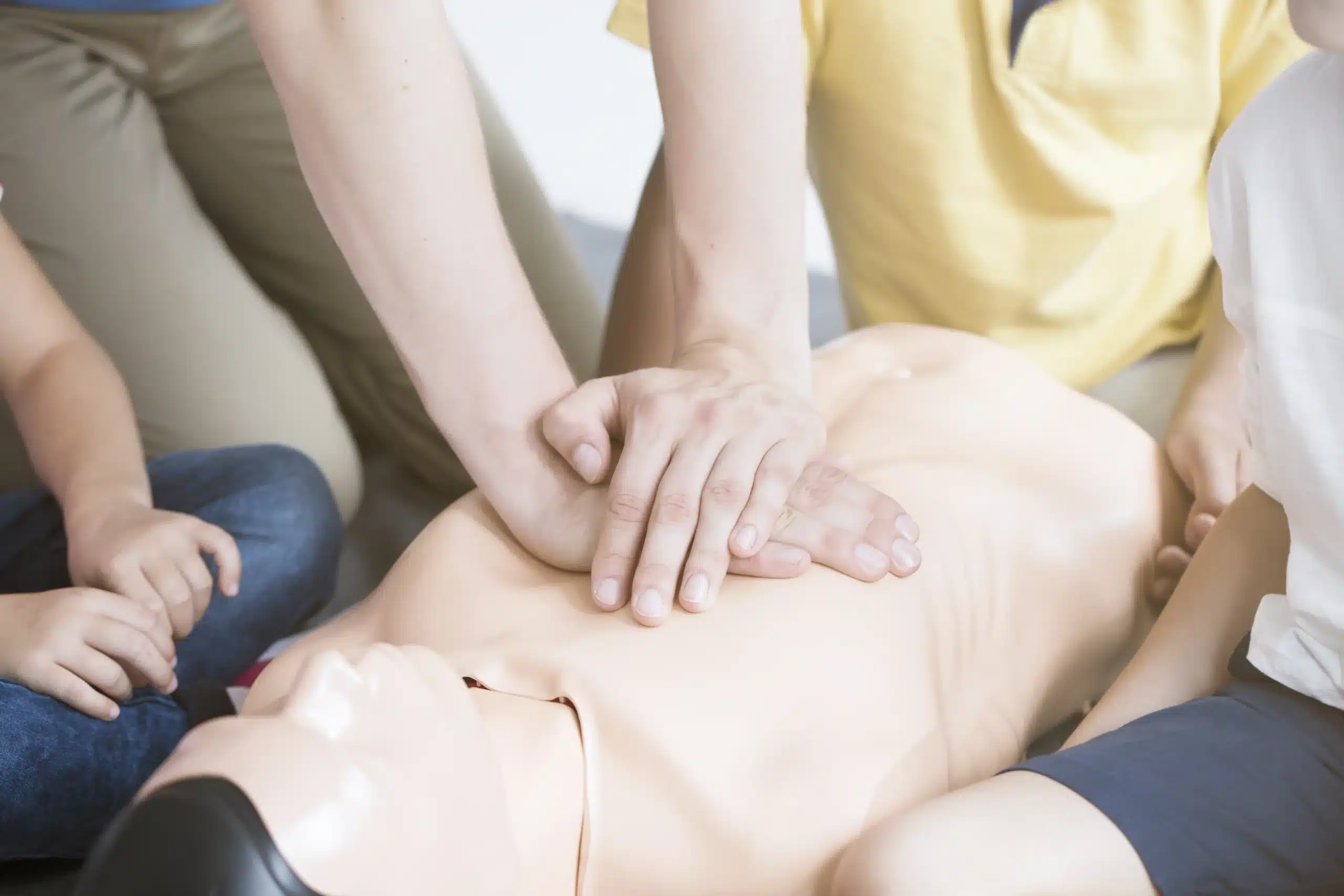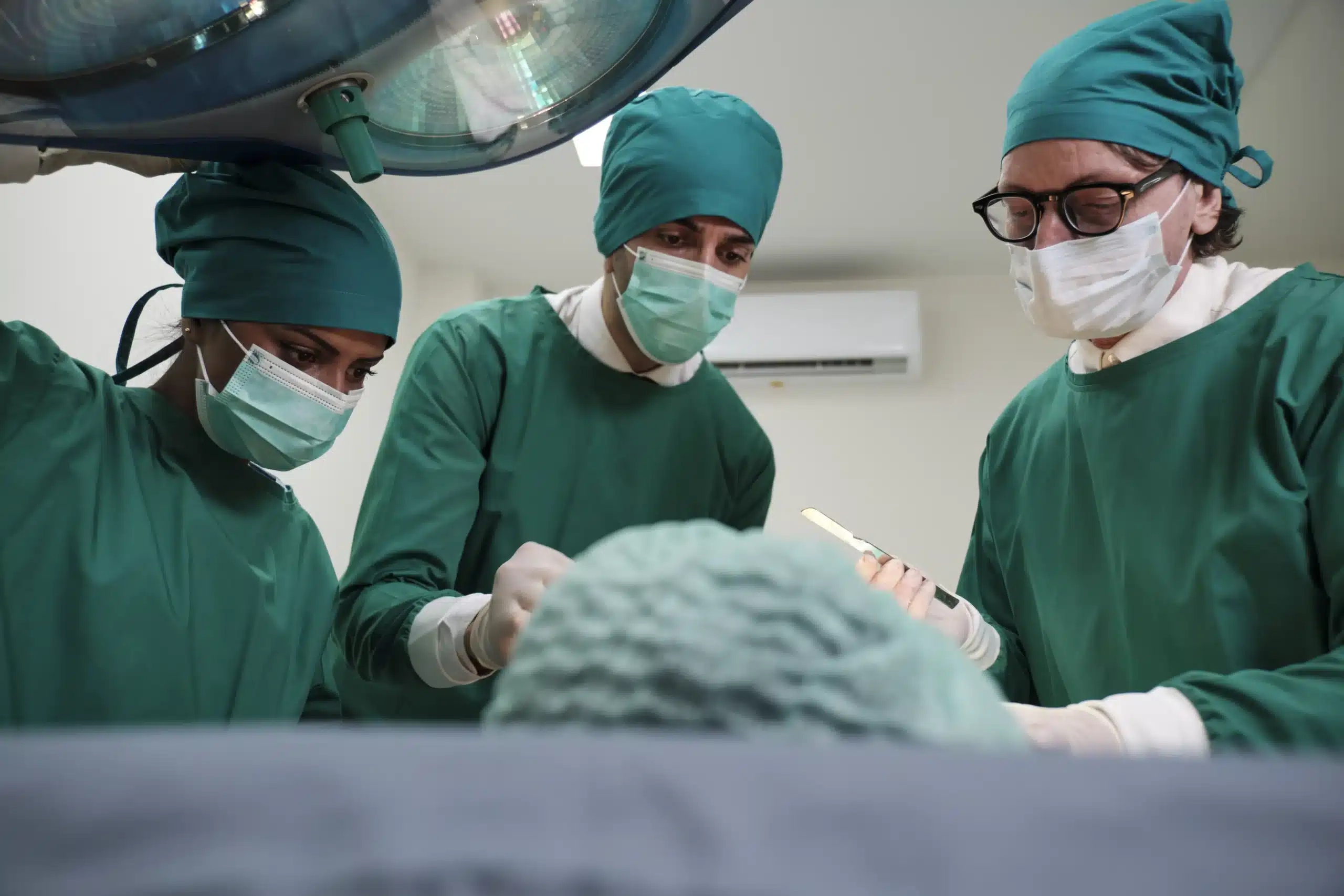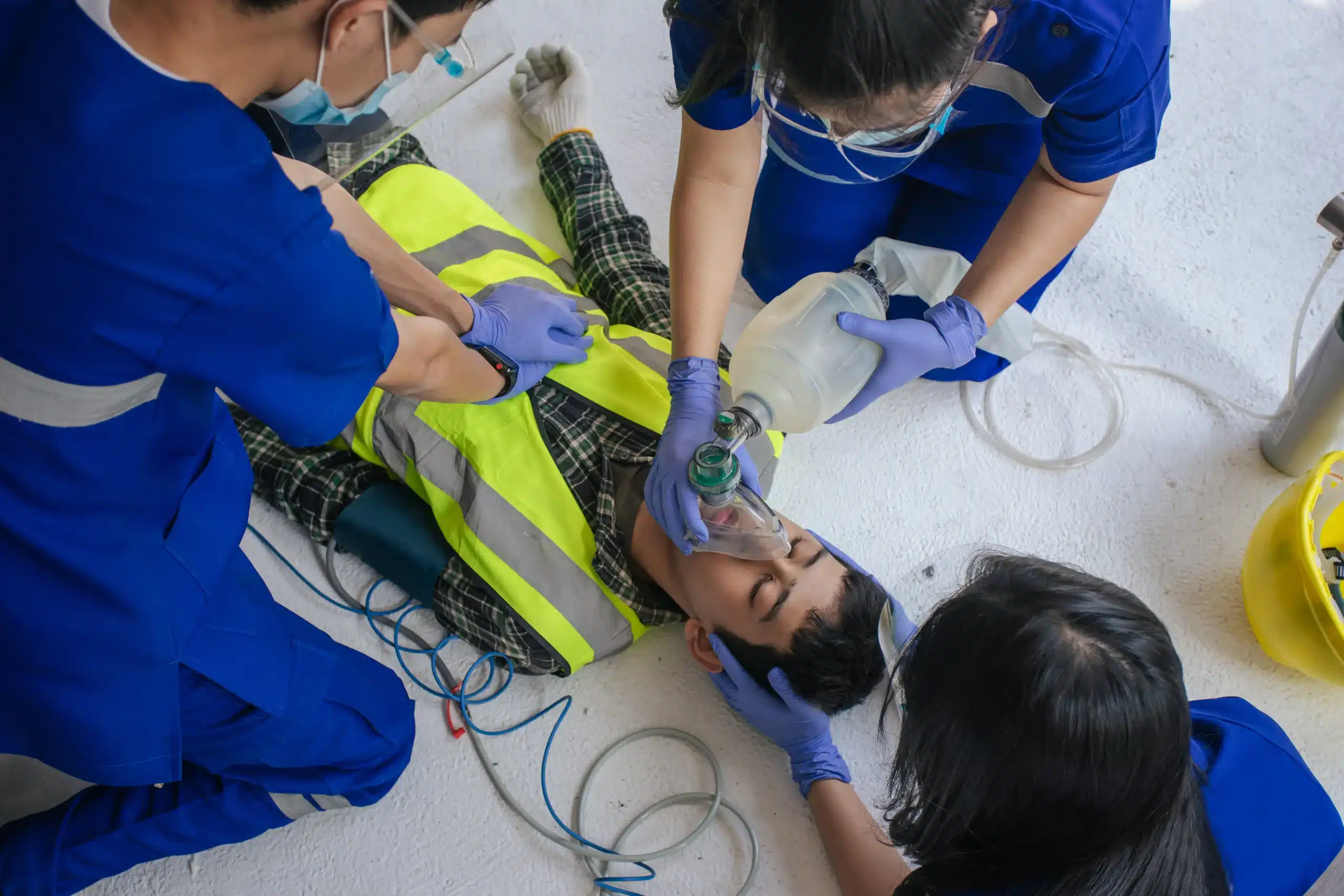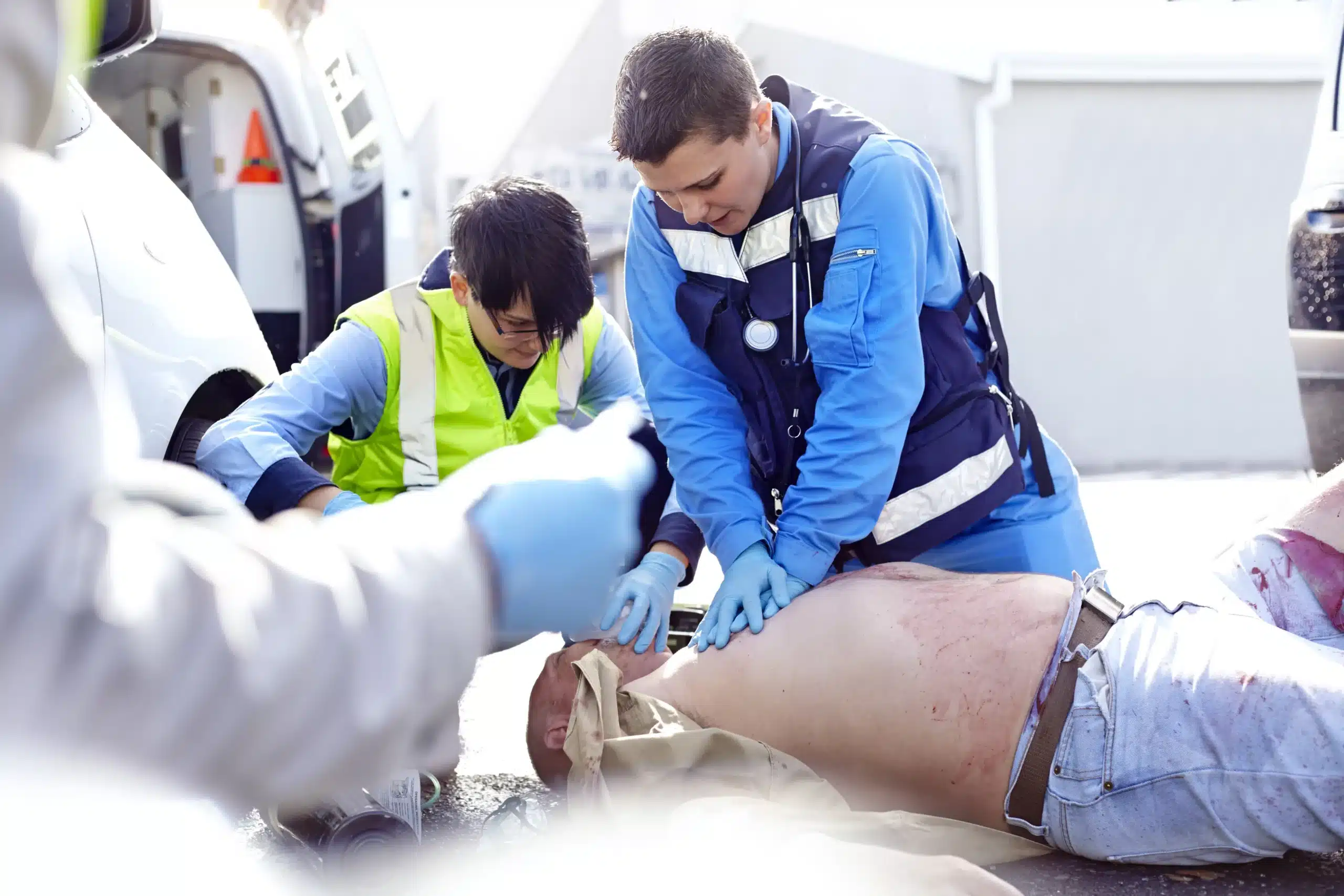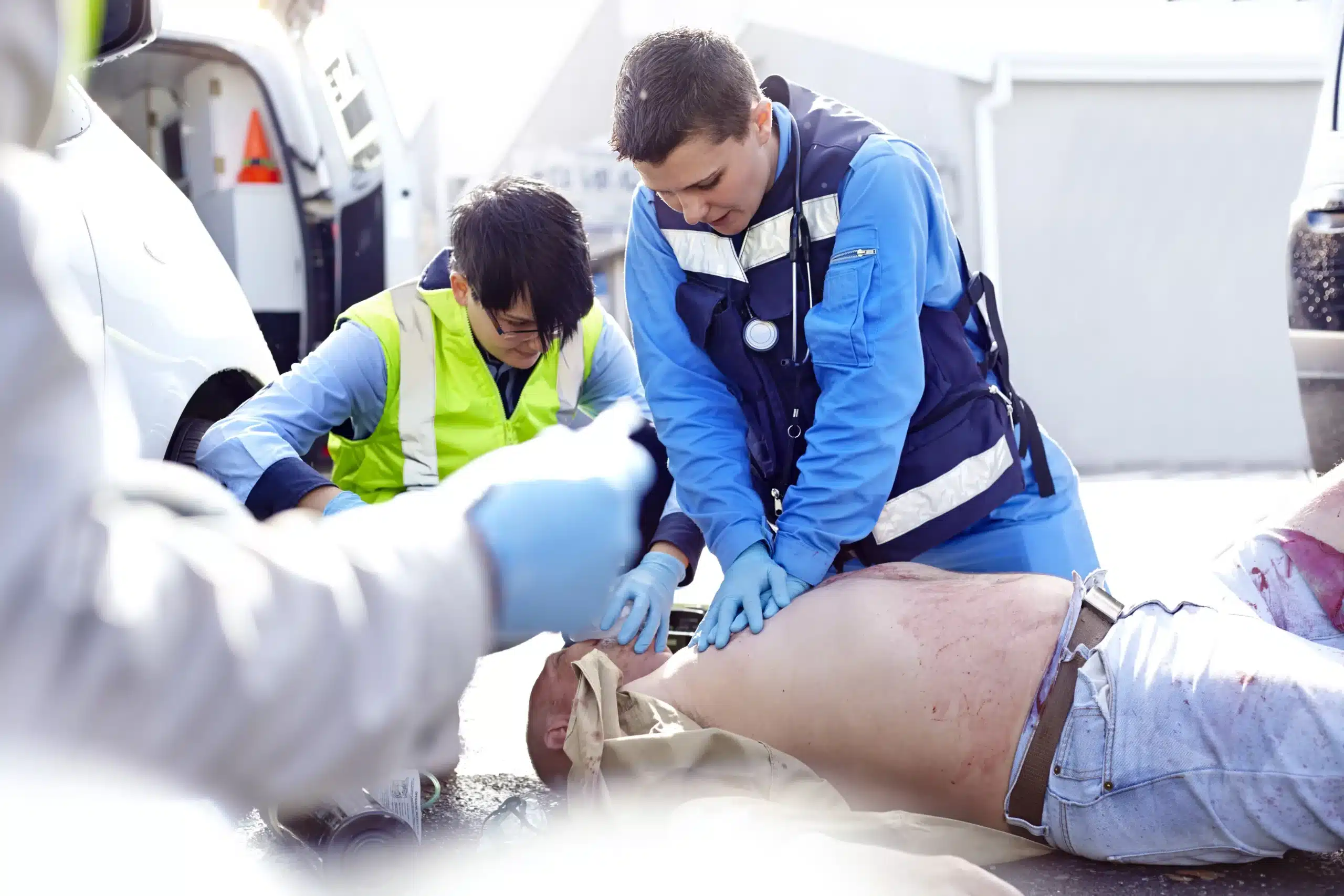Emergencies can happen when we least expect them. Would you know what to do if someone near you experienced a sudden cardiac arrest? CPR certification in San Leandro empowers you with the skills and confidence to respond effectively in such critical situations. This guide provides a clear roadmap to CPR certification, covering everything from the basics of CPR to choosing the right course and finding training providers in your area. We’ll explore the different types of CPR certifications available, discuss costs and discounts, and explain what to expect during a CPR course. Whether you’re pursuing CPR certification for your career or personal growth, this guide will equip you with the knowledge and resources you need to get started.
Key Takeaways
- Find the right CPR course for your needs: From basic CPR/First Aid for community members to advanced certifications like ACLS/PALS for healthcare providers, there’s a course for everyone. Consider factors like online vs. in-person formats and group discounts.
- Choose a qualified instructor: Look for instructors with a strong medical background and excellent teaching skills. Their real-world experience and ability to explain complex information clearly will make a difference in your learning. Check if they participate in ongoing training to stay current with the latest techniques.
- Stay current with your CPR skills: Regularly refresh your knowledge and skills. Renew your certification every two years and look into continuing education opportunities to ensure you’re always prepared to respond effectively in an emergency.
What is CPR Certification in San Leandro?
CPR certification equips you with the life-saving skills to respond to cardiac arrest and other medical emergencies. It means you’ve completed a recognized course and demonstrated proficiency in CPR techniques, including chest compressions and rescue breaths. This training empowers you to provide immediate assistance while waiting for professional medical help. CPR certification is essential for healthcare professionals, but it’s also invaluable for anyone who wants to be prepared for an emergency. Many workplaces, community centers, and schools encourage CPR certification to ensure a safe environment. Learning CPR can make a profound difference, giving you the confidence to act quickly and potentially save a life. Organizations like Hayward CPR Classes offer a variety of CPR courses in San Leandro, making it accessible to learn these vital skills.
CPR Certification Courses: What’s Available?
Knowing which CPR certification is right for you can feel overwhelming with so many options. This section breaks down the most common courses available in San Leandro, brought to you by the experts at Hayward CPR Classes.
Basic Life Support (BLS)
Basic Life Support (BLS) provides the foundational skills to respond to life-threatening emergencies. It’s a crucial CPR certification for healthcare providers and a smart choice for anyone wanting to learn essential lifesaving techniques. This course covers high-quality CPR for adults, children, and infants, along with how to use an Automated External Defibrillator (AED) and relief of choking. BLS certification emphasizes early recognition and response to ensure the best possible outcome in a crisis.
Advanced Cardiovascular Life Support (ACLS)
Advanced Cardiovascular Life Support (ACLS) builds upon the fundamentals of BLS. Designed for healthcare professionals, ACLS training delves into advanced techniques for managing cardiovascular emergencies, including strokes and cardiac arrest. This course covers effective team dynamics, airway management, and pharmacological interventions. It’s a vital certification for doctors, nurses, paramedics, and other healthcare providers who lead or participate in emergency response teams.
Pediatric Advanced Life Support (PALS)
Pediatric Advanced Life Support (PALS) focuses on the specific needs of infants and children facing medical emergencies. This course equips healthcare providers with the skills to recognize and respond to respiratory distress, cardiac arrest, and other pediatric emergencies. PALS emphasizes effective communication and teamwork, crucial elements in high-stress pediatric care situations. It’s a vital certification for pediatricians, nurses specializing in pediatric care, and other healthcare professionals working with young patients.
First Aid & CPR
Combining First Aid and CPR training provides a well-rounded skill set for handling various emergencies. First Aid teaches you how to respond to injuries like cuts, burns, and fractures, while the CPR component focuses on life-saving techniques for cardiac and breathing emergencies. This combined approach empowers you to confidently address a broader range of situations, making it an excellent choice for anyone from parents and teachers to workplace safety officers and community volunteers. Hayward CPR Classes offers group discounts for combined First Aid and CPR courses, making it even more accessible.
Choosing the Right CPR Course
Deciding to get CPR certified is a great first step. Now, let’s figure out the best course for you. This section breaks down how to choose the right CPR class in San Leandro, covering everything from assessing your needs to understanding certification renewal.
Assess Your Needs
Before signing up for a CPR course, think about why you want this training. Will you be using it in a professional setting, like a hospital or clinic? Or are you more focused on being prepared for emergencies at home with family and friends? The type of CPR course you need depends on who you’ll be helping. For example, healthcare providers often need specific certifications like ACLS (Advanced Cardiovascular Life Support) or PALS (Pediatric Advanced Life Support), while community members might find a general CPR/First Aid course more suitable. Hayward CPR Classes offers a range of courses to meet diverse needs, so you can find the perfect fit. Consider checking out our First Aid and CPR courses for a comprehensive approach.
Course Duration and Format
CPR courses come in different formats, including in-person, online, and blended learning (a mix of both). Think about your learning style and schedule. Do you prefer hands-on instruction in a traditional classroom setting? Or would the flexibility of online learning work better? Also, consider the time commitment. Some courses can be completed in a single day, while others might require more time. It’s important to choose a program that aligns with your availability. When researching courses, check the qualifications of the instructors and the credibility of the organization offering the training. A reputable provider, like Hayward CPR Classes, will have experienced instructors and adhere to the latest American Heart Association guidelines. For those looking for flexible options, explore our blended learning CPR courses.
Certification Renewal
CPR certifications don’t last forever. They typically need to be renewed every two years to ensure your skills are up-to-date. When choosing a course, ask about the renewal process and any associated costs. Knowing these details upfront will make it easier to stay current with your certification down the road. Contact us to learn more about renewal requirements and how Hayward CPR Classes can help you maintain your certification. We also offer convenient RQI classes for easy renewal.
CPR Certification Costs
CPR certification costs vary depending on the course type and training provider. Understanding the different pricing structures can help you budget effectively. Let’s break down the typical costs associated with CPR certification in San Leandro.
Individual Course Prices
Individual course prices are generally affordable. A standard CPR and AED course can cost around $35 per person, according to resources like Thumbtack. More specialized certifications, such as BLS Healthcare Provider, might have a slightly higher fee, potentially around $35, as reported by the BLS Test Center. These individual prices make CPR training accessible to a wide range of people. Check with specific providers like Hayward CPR Classes for their exact pricing. Remember to compare prices to find the best value for your needs.
Group & Student Discounts
Discounts are often available for groups or students. For groups of eight or more, the cost per person decreases significantly. Thumbtack suggests that group bookings can average around $280 total for eight students, offering considerable savings for employers. Students can also find dedicated student discounts on CPR classes, making certification more attainable. Contact training centers directly to inquire about their group and student discount policies. This can be a great way to reduce costs while ensuring your team or classmates receive essential training.
Financial Assistance
If you’re facing financial constraints, explore financial assistance options. Some CPR training providers in San Leandro offer programs to make training more accessible. Resources like San Leandro CPR Classes offer information on financial assistance for CPR certification. Reach out to various providers to discuss available options and find a course that fits your budget. Don’t let financial concerns prevent you from gaining this life-saving skill.
Instructor Qualifications
When choosing a CPR certification course, the instructor’s qualifications are just as important as the curriculum. You want to learn from someone with the right mix of real-world experience, teaching skills, and up-to-date knowledge. Here’s what to look for:
Medical & Emergency Expertise
Instructors leading CPR classes often have backgrounds in medicine or emergency response. This experience is invaluable. It means they’ve likely encountered real-life emergencies and can offer practical insights beyond the textbook. This firsthand knowledge makes the training more engaging and relevant, giving you a deeper understanding of how to respond effectively under pressure. For example, an instructor who has worked as a paramedic can share real-world scenarios and answer your questions.
Teaching Experience
CPR is a skill that requires clear instruction and hands-on practice. Look for courses taught by instructors who are not only experts in CPR techniques but also skilled educators. A good instructor can break down complex information into easy-to-understand steps, create a supportive learning environment, and provide personalized feedback. They should also be able to answer your questions thoroughly and address any concerns you may have. Hayward CPR Classes prioritizes experienced instructors who can effectively communicate these life-saving skills.
Ongoing Training
CPR guidelines and best practices are constantly evolving. It’s crucial that your instructor stays current with the latest recommendations from organizations like the American Heart Association. Ask about their commitment to ongoing training and continuing education. This dedication ensures they’re teaching the most effective and up-to-date techniques, giving you the confidence to respond appropriately in any emergency situation. Look for providers who emphasize regular training updates for their instructors, such as those available through RQI programs. This commitment to ongoing learning benefits both the instructor and the students.
Register for a CPR Course
Ready to get your CPR certification? San Leandro CPR classes offer convenient registration options to fit your schedule. You can quickly sign up online or register in person. We prioritize excellent customer service and want to make the process as smooth as possible for residents of San Leandro, Hayward, and Union City.
Online & In-Person Registration
Registering for a CPR class is straightforward. Visit San Leandro CPR Classes to view the course catalog and available dates. Our online registration system lets you select your preferred course, date, and time, and securely complete your registration. Prefer to register in person? Visit our training center during business hours. We’re happy to answer any questions and help you choose the right course.
Class Schedules
We understand busy schedules can make it tough to fit in training. That’s why we offer classes daily at various locations. Check our website for the most up-to-date schedule and find a class time that works for you. We also provide on-site group training for businesses and organizations—a convenient way to get your team certified. Contact us to learn more about scheduling a private group session.
Blended Learning
For medical and healthcare professionals seeking a fast and efficient path to certification, the American Heart Association RQI (Resuscitation Quality Improvement) program is an excellent option. This blended learning program combines online coursework with in-person skills sessions. RQI is a popular choice for renewing or obtaining your BLS, ACLS, and PALS certifications. It’s a modern approach to CPR training, allowing you to learn at your own pace and demonstrate your skills in a hands-on environment. Learn more about our RQI classes.
What Happens in a CPR Course?
CPR courses blend theory and practical skills to prepare you for real-life emergencies. Here’s a glimpse of what you can expect:
Classroom Instruction
CPR classes begin with instruction covering the fundamentals of CPR. You’ll learn how to recognize the signs of a cardiac arrest and understand the importance of calling 911. You’ll also learn the basics of CPR techniques. This foundational knowledge provides the context for the hands-on practice to follow. Choosing the right CPR course is crucial, so take the time to clarify your training goals before you enroll. Hayward CPR Classes offers a variety of courses to meet different needs, from basic CPR to advanced certifications like ACLS.
Hands-on Practice
After the classroom instruction, you’ll move into the practical portion of the course. You’ll practice CPR techniques on mannequins, allowing you to develop the muscle memory and coordination needed to perform compressions and rescue breaths effectively. Instructors provide guidance and feedback, ensuring you’re using the correct techniques and building your confidence. CPR training is offered at different levels, each designed for various skill levels, from basic community CPR to those requiring professional-level resuscitation skills.
Assessment & Certification
Once you’ve completed the hands-on practice, you’ll undergo an assessment to demonstrate your proficiency in CPR techniques. This typically involves performing CPR on a mannequin while the instructor evaluates your skills. Upon successful completion, you’ll receive your CPR certification. Don’t let common misconceptions hold you back – get the facts about CPR certification and be prepared to make a difference. Contact us at Hayward CPR Classes to learn more about our certification process and how we can help you become CPR certified.
Maintain Your CPR Certification
Keeping your CPR skills sharp is essential for responding effectively in emergencies. This section covers how to maintain your certification and stay up-to-date with the latest life-saving techniques.
Renewal Requirements
CPR certifications are typically valid for two years. To continue using your certification, you’ll need to complete a recertification course before it expires. These courses cover any updates to CPR guidelines and techniques, ensuring you’re always prepared to provide the most effective care. Check with your certifying organization, such as the American Red Cross, for specific renewal requirements.
Continuing Education
Even if your certification isn’t due for renewal, consider participating in continuing education opportunities. Staying informed about advancements in CPR can boost your confidence and improve your response in real-life situations. Providers like Heartline CPR emphasize the importance of choosing the right course and staying current with continuing education. Check with your certifying organization or training center for available resources and refresher courses. Heart Start CPR offers helpful advice on selecting the right CPR course for your needs. They can offer guidance on maintaining your skills and knowledge between renewals. Remember, staying current with CPR education isn’t just about maintaining a certification—it’s about being ready to make a difference when it matters most.
Top CPR Certification Providers in San Leandro
Finding the right CPR certification course can feel overwhelming, so we’ve compiled a list of reputable providers in San Leandro and nearby areas. This list includes options for various certifications, including BLS, ACLS, PALS, and First Aid.
Hayward CPR Classes
Hayward CPR Classes, a woman-owned American Heart Association Training Center, offers a comprehensive range of AHA-certified courses. These include BLS, ACLS, PALS, CPR, and First Aid. They hold classes daily in Hayward and surrounding cities, conveniently serving Hayward, Union City, and San Leandro. They also offer discounts for groups. Their focus on convenience and affordability makes them a strong option.
CPR Education
CPR Education focuses on providing CPR classes and training specifically in San Leandro and nearby areas. As an AHA-certified provider, they aim to equip individuals with the skills to respond effectively in emergencies. If a local focus is important to you, CPR Education is worth considering.
Safety Training Seminars
Safety Training Seminars offers a wide selection of courses, including CPR, BLS, ACLS, PALS, and First Aid. They also provide NRP courses in nearby cities and specialized training for California childcare providers. All courses are AHA-certified, ensuring nationally recognized credentials. Their broader range of courses may appeal to those seeking specialized certifications.
American Red Cross
The American Red Cross offers CPR classes and certification in nearby Oakland. With both in-person and online options, they provide flexibility for different learning preferences. Taught by Red Cross experts, their courses aim for clarity and helpfulness.
Local Hospitals & Medical Centers
Many local hospitals and medical centers also offer CPR certification courses. Check with facilities in San Leandro, such as San Leandro Hospital, for information on their courses. These are often taught by experienced medical professionals and can offer a valuable real-world perspective. For a comprehensive guide to CPR certification in San Leandro, explore this resource.
Why is CPR Certification Important in San Leandro?
Knowing CPR can make a real difference in your community and career. It empowers you to respond effectively during emergencies, potentially saving lives. Let’s explore why CPR certification is so valuable in San Leandro.
Community Safety
CPR-trained individuals become invaluable assets to their communities. As CPR Education emphasizes, the goal of CPR training in San Leandro is “equipping anyone in the San Leandro area with the absolute best training and skills they need to save lives.” Having more residents trained in CPR creates a network of first responders within the community, ready to assist during emergencies before professional help arrives. This immediate response can significantly improve survival rates, especially in cases of cardiac arrest. Consider getting your CPR certification and becoming a vital link in San Leandro’s safety net. Contact us to learn more.
Career Advancement
For many professions in San Leandro, CPR certification isn’t just recommended—it’s required. As CPR Education points out, “Basic Life Support (BLS) for Healthcare providers is a required CPR certification for those in almost all medical arenas.” This includes roles like nurses, doctors, medical assistants, and other healthcare providers. Even outside the healthcare sector, CPR certification can enhance your resume and create opportunities in fields like education, childcare, and fitness. Hayward CPR Classes offers BLS courses designed for various professions, helping you meet job requirements and advance your career.
Emergency Preparedness
Emergencies can happen anytime, anywhere. Being prepared is key, and CPR certification equips you with the skills to respond effectively. MyCPR NOW highlights the importance of being prepared, dispelling common myths about CPR certification to encourage more people to learn this life-saving skill. Choosing the right CPR course, as Heartline CPR advises, ensures you receive the appropriate training and certification to handle various emergency situations. Whether it’s a family member experiencing a medical crisis or a stranger collapsing in a public place, your CPR training can make a critical difference.
Related Articles
- CPR Training in San Leandro: A Complete Guide
- CPR Classes in San Leandro: A Certification Guide
- ACLS HeartCode San Leandro: A Certification Guide
Frequently Asked Questions
What’s the difference between BLS and ACLS CPR certification?
BLS certification provides the fundamental skills needed to respond to life-threatening emergencies, focusing on high-quality CPR for adults, children, and infants, AED use, and choking relief. It’s suitable for healthcare providers and anyone wanting essential lifesaving skills. ACLS certification builds upon BLS, delving into advanced techniques for managing cardiovascular emergencies like strokes and cardiac arrest. It covers team dynamics, airway management, and pharmacological interventions, making it essential for healthcare professionals leading or participating in emergency response teams.
How much does CPR certification cost in San Leandro?
Individual CPR and AED courses typically cost around $35, while more specialized certifications like BLS for Healthcare Providers might be slightly higher. Group discounts are often available, significantly reducing the per-person cost for groups of eight or more. Students can also find dedicated discounts. Check with specific providers like Hayward CPR Classes for their exact pricing and discount policies. If cost is a barrier, explore financial assistance options available through some providers.
How do I choose the right CPR class for me?
Consider why you want CPR training. Are you a healthcare professional needing it for work, or do you want to be prepared for emergencies at home? Healthcare providers often require specific certifications like ACLS or PALS, while a general CPR/First Aid course might suit others. Think about your learning style and schedule. Do you prefer in-person classes or the flexibility of online learning? Also, consider the time commitment and course duration. Finally, research the instructor’s qualifications and the training provider’s credibility.
What can I expect during a CPR course?
CPR courses combine classroom instruction and hands-on practice. You’ll learn to recognize cardiac arrest signs, the importance of calling 911, and basic CPR techniques. You’ll then practice these techniques on mannequins, receiving instructor guidance and feedback. Finally, you’ll be assessed on your CPR skills. Upon successful completion, you’ll receive your certification.
How do I maintain my CPR certification?
CPR certifications typically expire after two years. You’ll need to complete a recertification course to stay current. These courses cover updates to CPR guidelines and techniques. Even if your certification isn’t due for renewal, consider continuing education opportunities to stay informed about advancements in CPR. Check with your certifying organization or training center for renewal requirements and continuing education resources.
